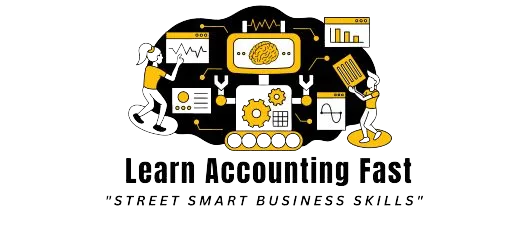Mastering Leverage Ratios
Leverage ratios are crucial tools in financial analysis, especially for assessing a company's debt levels relative to its
equity or assets. These ratios provide insights into the financial structure, risk, and potential return of a company.
Here's a comprehensive list of key leverage ratios, including their formulas, purposes, and solutions to interpret them effectively.
1. Debt-to-Equity Ratio (D/E)
Formula: Debt-to-Equity Ratio = Total Liabilities / Shareholders' Equit
Purpose: This ratio measures the proportion of a company's funding that comes from debt relative to equity. A higher ratio indicates a company might be risky as it relies more on debt to finance its operations.
Solution: To improve the D/E ratio, a company can either reduce its debt or increase its shareholders' equity, often through retaining more earnings or issuing more equity.
2. Debt Ratio
Formula: Debt Ratio = Total Liabilities / Total Assets
Purpose: It assesses the percentage of a company's assets financed by debt. A higher ratio suggests greater leverage
and higher financial risk.
Solution: Reducing total liabilities or increasing total assets can improve the debt ratio. This might involve paying off debt
or acquiring more assets without increasing debt.
3. Interest Coverage Ratio
Formula: Interest Coverage Ratio = Earnings Before Interest and Taxes (EBIT) / Interest Expense
Purpose: This ratio evaluates a company's ability to pay interest on its outstanding debt. A higher ratio indicates better financial health and lower risk of default.
Solution: Increasing earnings (EBIT) or reducing interest expenses can improve this ratio. Strategies might include refinancing to lower interest rates or boosting operational efficiency to increase earnings.
4. Equity Multiplier
Formula: Equity Multiplier = Total Assets / Shareholders' Equity
Purpose: It measures the amount of assets financed by equity. A higher value indicates higher leverage and potentially higher risk but also higher potential returns.
Solution: Decreasing total assets financed by debt (reducing liabilities) or increasing equity can improve the equity multiplier.
5. Fixed Charge Coverage Ratio
Formula: Fixed Charge Coverage Ratio = (EBIT + Fixed Charges Before Tax) / (Fixed Charges Before Tax + Interest)

Purpose: This ratio assesses a company's ability to cover fixedcharges (like interest and leases) beyond interest expenses alone. A higher ratio indicates a stronger ability to meet fixed obligations.
Solution: Enhancing operational efficiency to increase EBIT or r educing fixed charges can improve this ratio. Negotiating lower lease payments or refinancing debt to lower interest rates are practical steps.
6. Leverage Ratio (Basel III for Banks)
Formula: Leverage Ratio = Tier 1 Capital / Total Exposure
Purpose: Specifically for banking institutions, this ratio measures core capital against total assets without risk
weighting. It aims to ensure banks have enough capital to cover exposures.
Solution: Banks can improve this ratio by increasing their Tier 1 capital (e.g., retaining earnings or issuing equity) or
reducing total exposure (e.g., offloading risky assets).
Interpretation and Application
• High vs. Low Ratios: High leverage ratios can indicate high risk but also the potential for high returns.
Conversely, low ratios suggest lower risk and possibly lower returns.
• Industry Comparisons: It's essential to compare these ratios within the same industry, as acceptable levels of
leverage vary significantly across sectors.
• Trend Analysis: Observing the trend of these ratios over time can provide insights into a company's changing financial leverage and risk profile.
Conclusion
Leverage ratios are indispensable for financial planners, investors, and analysts to evaluate a company's financial
health and risk level.
By understanding and applying these ratios, professionals can make informed decisions regarding investment strategies, risk management, and financial planning.
Latest Posts
6 Secret Business
Tips
Ever feel like you’re working hard… but the money still feels “mysterious”? But you can’t always tell what’s actually moving the needle?
The Six Laws of
Wealth Creation
The Six Laws of Wealth Creation. These timeless actions work in 2025’s rapid-change environment and give you calm, repeatable steps to grow money.....
How to Read Business
Financial Reports
A Story of Business Secrets Hidden in Reports
Sarah sat in her office staring at a thick folder of financial reports. Sales, costs, cash flow....
The Millionaire
Mind in Action
Timeless Wealth, Flow, and Power from Robert Kiyosaki,Frank Kern, Tony Robbins
and Open Ai......
Why Cost Control Is the Forgotten Key to Profitability
Most entrepreneurs chase sales growth like it’s the only thing that matters.They spend thousands on ads, new products, and fa ncy offices.....
Master Prompts For
Financial Analysis
The Complete Small Business Guide to Financial Analysis: Formulas, Examples, and Tips.These are super-powerful questions you can ask an AI to help..
Disclaimer: The content shared on this blog and in these videos is for informational and educational purposes only. Despite my 30 years of experience as a business owner, I am not a certified financial advisor, accountant, or legal professional. The insights and tips shared are based on personal experiences and should not be taken as professional financial or legal advice. For financial, legal, or professional advice, please consult with a certified professional in the respective field. I disclaim any liability or responsibility for actions taken based on any information found in this blog or these videos.
Copyright Learn Accounting Fast - All Rights Reserved 2025









Facebook
Instagram
X
LinkedIn
Youtube